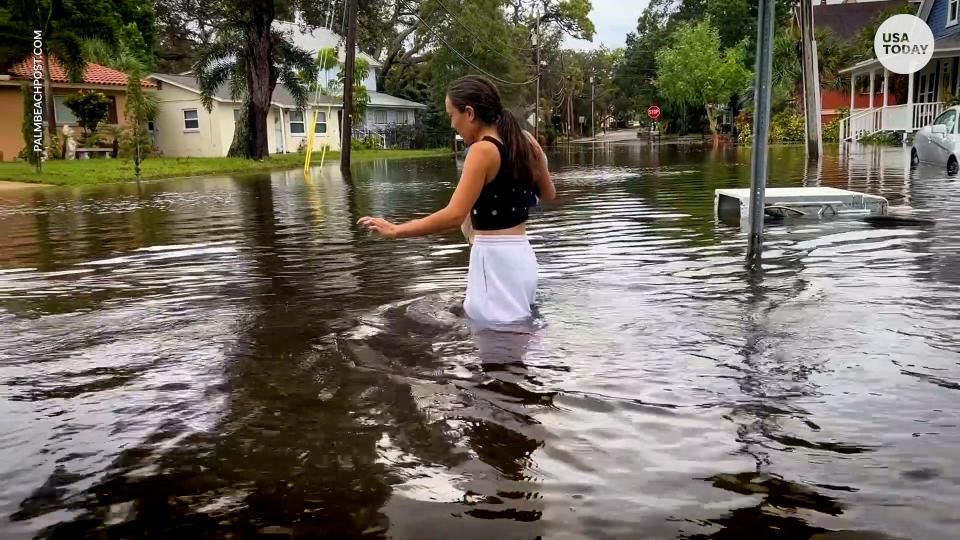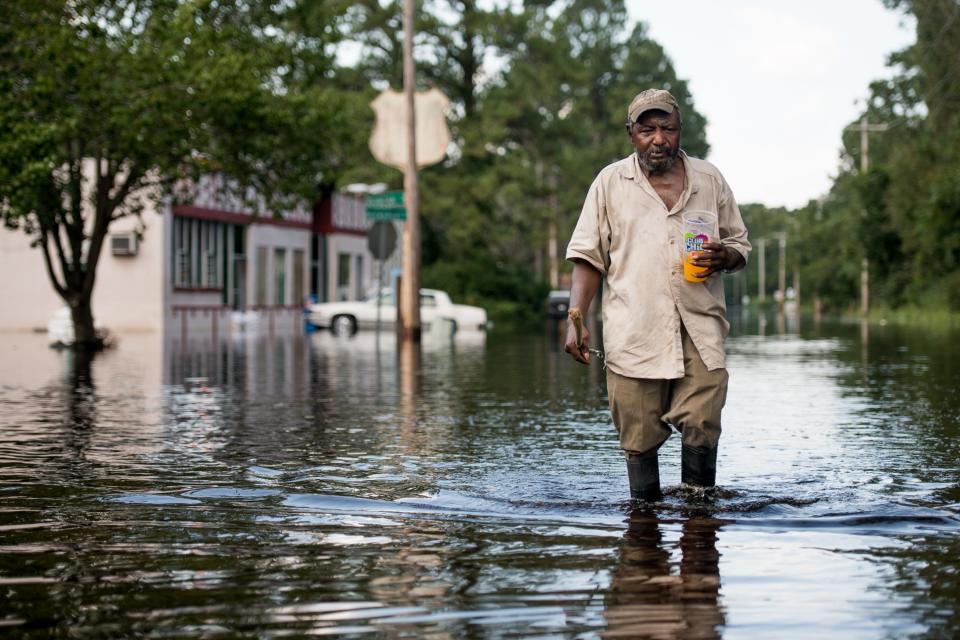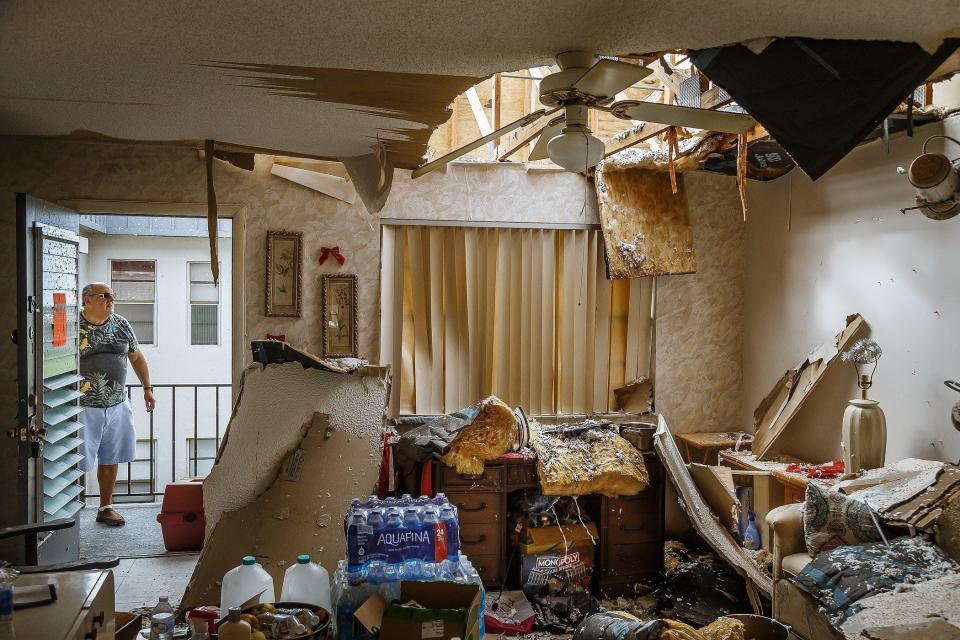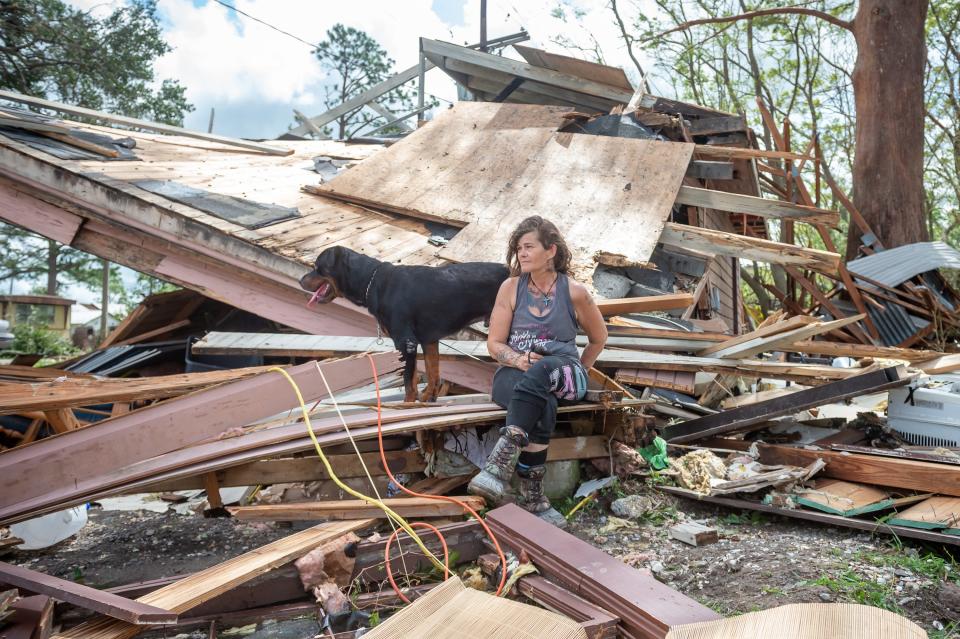Hurricanes can kill from 1,000 miles away — and other terrifying dangers
Hurricane season 2024 is shaping up to be dangerous and deadly, but maybe not for the reasons you think.
In the months ahead, we will again hear about storms reaching Category 1 through 5 strength — with storms at the upper end of the scale often rightly generating much more alarm than storms at the lower end. (The National Hurricane Center has started issuing daily tropical outlooks and the Atlantic hurricane season will officially begin June 1.)
But experts say that scale can be confusing, because it only measures the wind risk and does not account for coastal storm surge and rainfall-driven flooding — the two biggest killers in hurricanes. Perhaps even more unexpected: Hurricanes can cause deadly rip currents even when they are spinning out at sea more than 1,000 miles away from land.
There's still time to prepare: Here's what you can do now to help stay safe during hurricane season
"The category is just a very small piece of the puzzle," said Robbie Berg, senior hurricane specialist at the National Hurricane Center. Cody Fritz, a storm surge specialist at the center, agreed, saying "If you ask me, I would always say never focus on the categories. I think you focus more on the hazards, whether it be wind, surge or rainfall."
Here's a look at the many surprising dangers caused by these monster storms:
Storm surge
Storm surge, the massive amount of water that builds up and comes ashore during a hurricane, is often the deadliest and most destructive threat from these devastating storms.
Storm surge has accounted for about half of all the deaths in hurricanes since 1970, according to the hurricane center. It caused most of the 1,800 deaths in Hurricane Katrina in 2005 and 41 of the 66 direct deaths during Hurricane Ian in 2022.
“The storm surge, by far, creates more damage because it’s coming in like a large wave, a large flow of water, and basically mowing everything down with that water,” said AccuWeather senior meteorologist Dan Kottlowski.
All locations along the U.S. East and Gulf coasts are vulnerable to storm surge.

Storm surge can penetrate well inland from the coastline, the hurricane center said. During Hurricane Ike in 2008, for example, the surge moved inland nearly 30 miles in some locations in southeastern Texas and southwestern Louisiana.
Inland flooding
Hurricanes often produce widespread, torrential rains in excess of six inches, which can result in deadly and destructive floods, the hurricane center said. In fact, flooding is the major threat from hurricanes and tropical storms for people living inland.
And overall, between 2013 and 2022, 57% of the hurricane and tropical storm related deaths in the U.S. were attributed to freshwater flooding, according to a report from the American Meteorological Society.

Flash flooding, defined as a rapid rise in water levels, can occur quickly due to intense rainfall. Longer-term flooding on rivers and streams can persist for several days after the storm.
When approaching water on a roadway, always remember "Turn Around Don't Drown."

Rip currents
The strong winds of a hurricane can cause dangerous waves that pose a significant hazard to mariners and coastal residents and visitors, the hurricane center said. When the waves break along the coast, they can produce deadly rip currents – even at large distances from the storm.
A report published by the American Meteorological Society last year concluded the percentage of direct deaths attributed to tropical-cyclone-related rip currents has doubled in recent years. The authors also found:
Fatalities often occur one or two at a time from distant storms hundreds of miles offshore.
Florida, North Carolina and New Jersey experienced the highest number of tropical-cyclone-related surf and rip current deaths.
In 2008, despite the fact that Hurricane Bertha was more than a 1,000 miles offshore, the storm resulted in rip currents that killed three people along the New Jersey coast and required 1,500 lifeguard rescues in Ocean City, Maryland, over a 1 week period.
In 2009, all six deaths in the United States directly attributable to hurricanes and tropical storms occurred as the result of drowning from large waves or strong rip currents.
“The reason rip currents are so deadly is because all the other hazards in a hurricane have a visual cue,” the hurricane center's Jamie Rhome said.
All of the eight direct fatalities after Hurricane Idalia in 2023 were caused by rough surf and rip currents: three each in North Carolina and New Jersey and one each in Florida and New Jersey, the center said.
Tornadoes

Tornadoes aren't uncommon during hurricanes: In fact, almost all hurricanes and tropical storms that make landfall in the United States spawn at least one tornado, provided enough of the storm's circulation moves over land, according to the National Oceanic and Atmospheric Administration (NOAA).
"These tornadoes most often occur in thunderstorms embedded in rain bands well away from the center of the hurricane," NOAA said. "However, they can also occur near the eyewall. Usually, tornadoes produced by tropical cyclones are relatively weak and short-lived, but they still pose a significant threat."
Hurricanes and tropical storms offer all the necessary weather elements to spawn tornadoes: They carry small, spinning supercells inside their outer bands, which are thunderstorms that can form twisters, Live Science reported.
Fueled by warm, moist ocean air, hurricanes – with their strong wind shear near the ground – can create an unstable atmosphere when they make landfall, and their swirling vortices can flip vertically into funnels.
Although hurricanes can spawn tornadoes up to about three days after landfall, statistics show that most of the tornadoes occur on the day of landfall or the next day, NOAA said.
The worst tornado outbreak occurred during 2004’s Hurricane Ivan, which caused a multiday outbreak of 127 tornadoes. The deadliest hurricane-spawned tornado was in October 1964, when 22 people died in Larose, Louisiana, during a twister from Hurricane Hilda.
Carbon monoxide poisoning
One deadly hazard that impacts areas hit hard by hurricanes is poisoning from carbon monoxide, an invisible, odorless gas that's emitted from generators used to provide power after the storms.
The Centers for Disease Control and Prevention reports that carbon monoxide poisoning is "a primary cause of storm-related deaths," as all generators emit fumes, even when operating properly. "When generators are placed in enclosed or poorly ventilated areas — such as attached garages or covered porches — (carbon monoxide) can accumulate and poison residents," the CDC said.
In 2020, at least 21 fatalities after the storm were attributed to carbon monoxide poisoning from generators in the aftermath of Hurricanes Ida and Laura.

Wind
Finally, we couldn't have a list of hurricane hazards without mentioning wind, which remains the mark by which all hurricanes are measured. Although not really a surprise danger, hurricane‐force winds – 74 mph or more – can destroy buildings and mobile homes, the hurricane center warned.
"Debris, such as signs, roofing material, siding and small items left outside become flying missiles during hurricanes," the hurricane center said. Winds can stay above hurricane strength well inland: In 2004, for example, Hurricane Charley made landfall at Punta Gorda on the southwest Florida coast and produced major damage well inland across central Florida with gusts of more than 100 mph.
This article originally appeared on USA TODAY: Hurricane dangers include wind, surge, rain, tornadoes, rip currents
